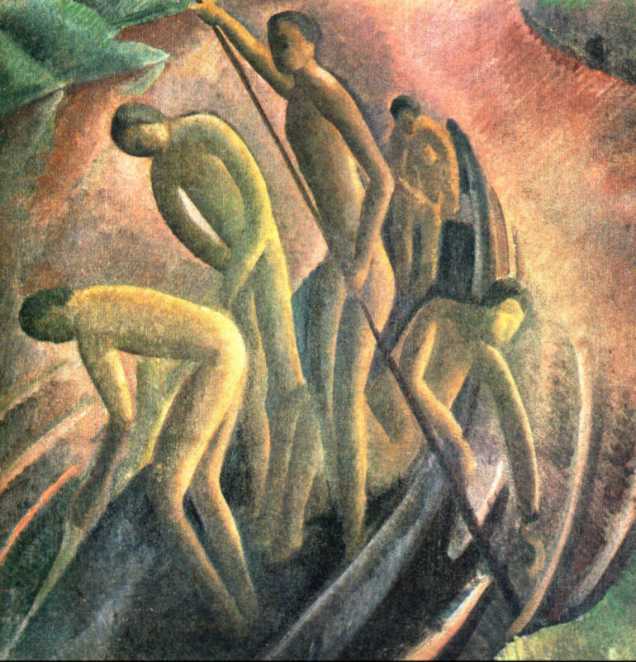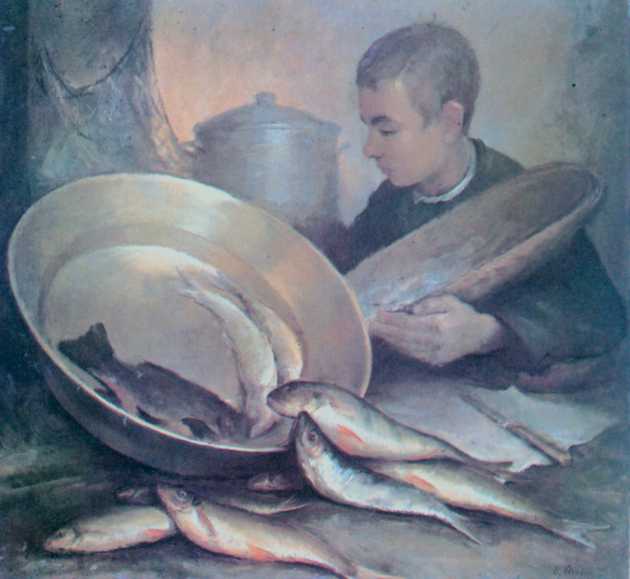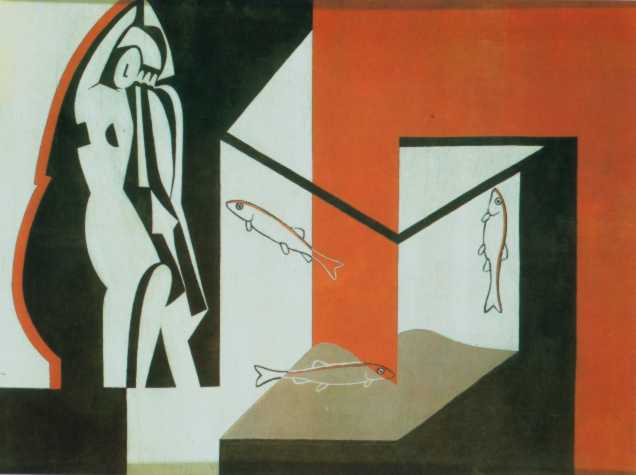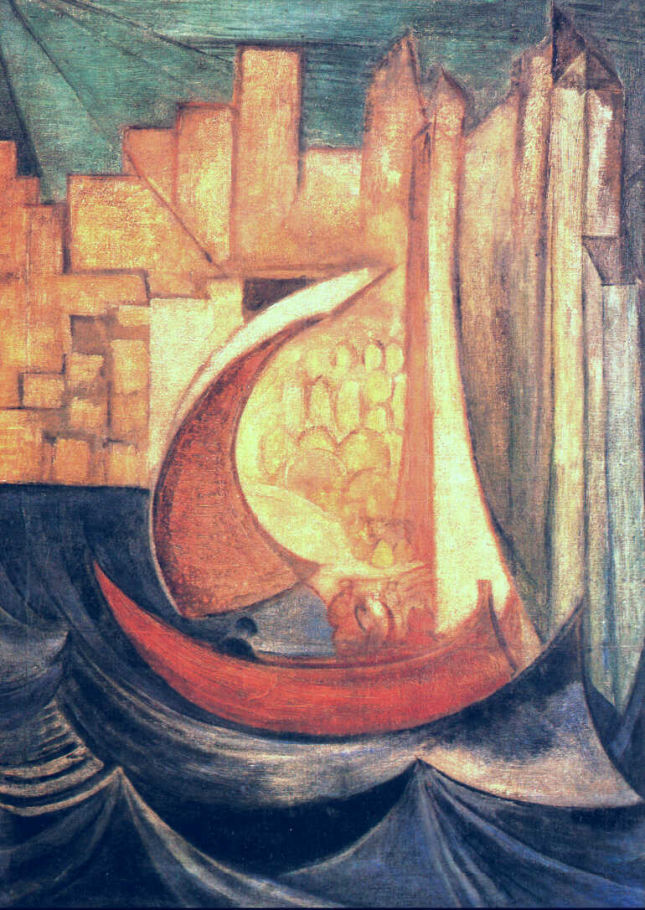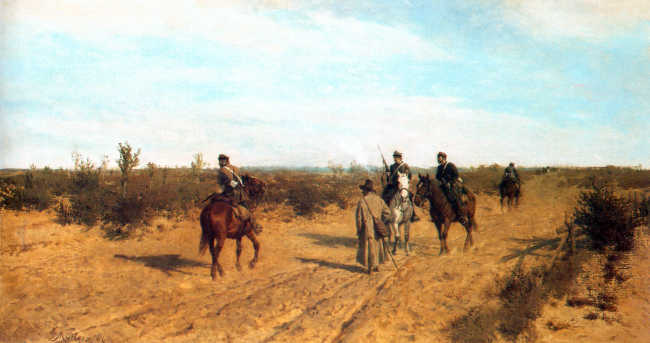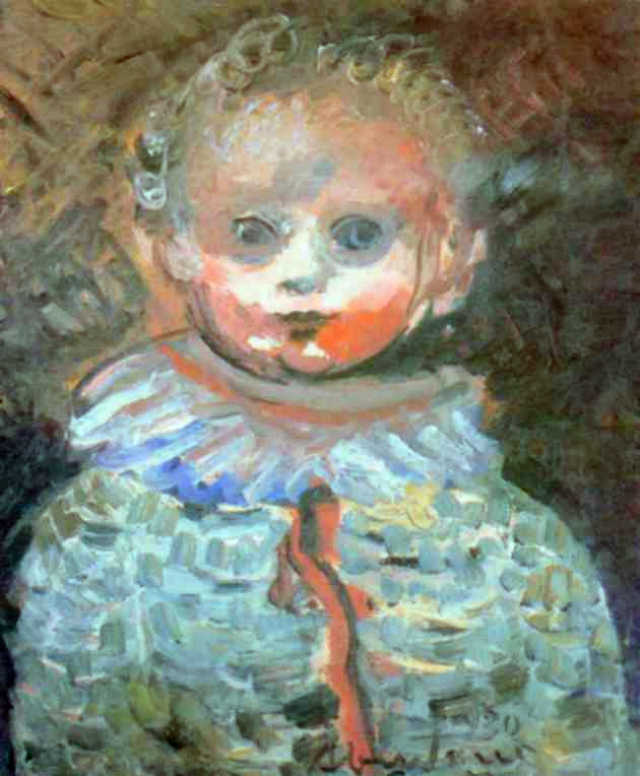THE BOYS FROM GLASGOW
 The age-old rivalry between Glasgow and Edinburgh flared up again at the end of the 19th century., when the Scottish Royal Academy announced, that it will not accept works by West Coast artists. However, this prohibition did not last very long, and this is due to the fact that it was created in the years 70. a loose association of Glasgow artists, whose works inspired by French Impressionism brought fresh air to Scottish painting. Not very flatteringly called "Glasgow Boys" at first, just a few years later these artists were identified with it, what the best and most interesting painting in the city on the Clyde. The core of the group consisted of five painters: Gurthie, Lavery, Hornel, Henry i Crawhall. Although they came from different backgrounds, they unanimously rejected the 18th-century conservatism prevailing in art. They were alien to both the sentimental perception of their native history – shown with an anecdote, whose heroes were most often "poor, but happy ”families – as well as the veristic way of painting this kind of pictures. They called them contemptuously "tubes of glue", because they were covered with a varnish, which darkened and "aged" the paintings. Instead of "patinating" his paintings, The Glasgow Boys have started experimenting with colors, boldly putting paints on the canvas. The subject of their works, focused mainly on the daily life and hard work of the villagers, she was equally challenging to accepted norms, like the Impressionist technique used by the artists. After all, the main art collectors and buyers of paintings in Glasgow at that time were wealthy tobacco moguls and merchants with tastes shaped by academism..
The age-old rivalry between Glasgow and Edinburgh flared up again at the end of the 19th century., when the Scottish Royal Academy announced, that it will not accept works by West Coast artists. However, this prohibition did not last very long, and this is due to the fact that it was created in the years 70. a loose association of Glasgow artists, whose works inspired by French Impressionism brought fresh air to Scottish painting. Not very flatteringly called "Glasgow Boys" at first, just a few years later these artists were identified with it, what the best and most interesting painting in the city on the Clyde. The core of the group consisted of five painters: Gurthie, Lavery, Hornel, Henry i Crawhall. Although they came from different backgrounds, they unanimously rejected the 18th-century conservatism prevailing in art. They were alien to both the sentimental perception of their native history – shown with an anecdote, whose heroes were most often "poor, but happy ”families – as well as the veristic way of painting this kind of pictures. They called them contemptuously "tubes of glue", because they were covered with a varnish, which darkened and "aged" the paintings. Instead of "patinating" his paintings, The Glasgow Boys have started experimenting with colors, boldly putting paints on the canvas. The subject of their works, focused mainly on the daily life and hard work of the villagers, she was equally challenging to accepted norms, like the Impressionist technique used by the artists. After all, the main art collectors and buyers of paintings in Glasgow at that time were wealthy tobacco moguls and merchants with tastes shaped by academism..
James Gurthie spent every summer in the countryside – surrounded by artists close to his own views on art – painting outdoors and observing the daily life of its inhabitants. Instead of happy villagers, his paintings are populated by highly personalized characters, rebellious faces, painted with vivid colors, without attention to detail or the subtleties of chiaroscuro. His most famous work, Funeral in the mountains (Museum of Religion and Sacred Art), became a model of emotional restraint for the rest of the association, bold colors and realism. This image was impressed by John Lavery, then studying in France, decided to return to Glasgow. Soon he became famous in the international arena as an excellent portrait painter. The subdued palette is reminiscent of the works of Whistler, however one of his earlier works, having a bourgeois company at play, shows figures in motion, with the use of bright colors. W 1888 r. Lavery undertook the documenting of the World Show in Glasgow; the next phase of his work are large-size paintings, which include a painting of Queen Victoria's visit to Glasgow, exhibited at the Royal Concert Hall.
More than realistic subject, the decorativeness and possibilities of the palette were in the center of interest of friends George Henry and Edward A.. Hornela. Color and composition play a dominant role in Henry's Galloway Landscape; and the painting Druids, painted jointly by both artists (both exhibited at Kelvingrove), with a thick texture, draws attention with its intricate Celtic symbolism. W 1893 r. both painters set off on a journey to Japan, financed by Alexander Reid and William Burrell, where their creativity gained additional expression through the use of large planes of the pure in the composition, vivid color. Scottish artists were then at the forefront of modern European painting.
Born in Newcastle, Joseph Crawhall was an individualist who shunned the world. Thanks to the talent of the draftsman, He created excellent watercolors characterized by freshness with his free use of lines and phenomenal visual memory, realistic look. Unlike Gurthie and Lavery, hungry for fame and wealth, Crawhall was a humble artist, which he loves! hunting and trips to nature, and who found his calling in study and dedication in gentle, a painterly form of an interesting animal world. His patron was William Burrell, who passed on Crawhall's collected works to the city; You can see them today in the gallery of his name.
The painting school in Glasgow experienced its greatest boom approx. 1900 r. When its members – at least some – achieved the desired successes and fame, and with them wealth, she began to gradually loosen her ranks, to completely fall apart with the outbreak of the First World War. However, the impact cannot be overestimated, what this movement has had on contemporary art, destroying the habits of the elite and igniting the aspirations of the next generation of artists, who- acting in turn in Edinburgh – inspired by the achievements of "The Boys from Glasgow", and they went down in art history under the name of "colorists".



